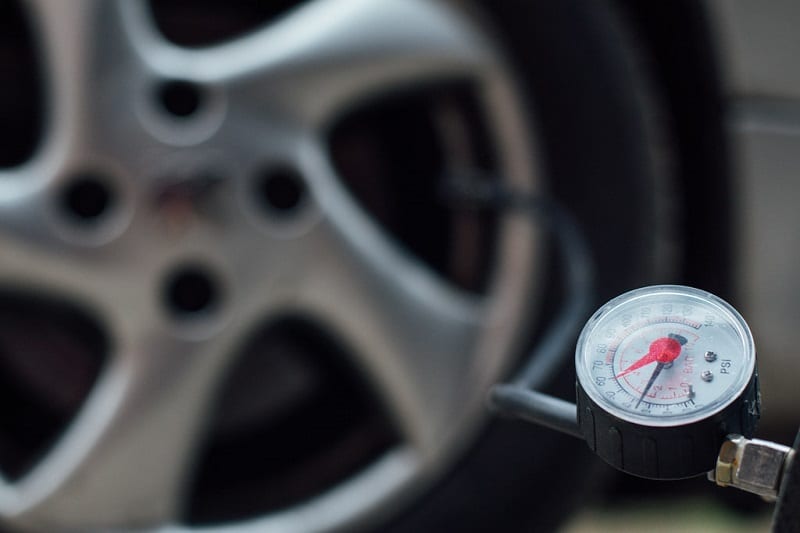No, 40 PSI is not too much for 36 PSI tires. The recommended tire pressure for your vehicle is based on the manufacturer’s specifications and what they consider to be the best balance of tire life, fuel economy, and ride comfort. In general, it is best to stick within the recommended range to avoid any issues.
If you have ever wondered if 40 psi is too much for 36 psi tires, the answer is no. While it is true that overinflating your tires can lead to a blowout, as long as you stay within the maximum pressure rating for your tires, you will be fine. In fact, inflating your tires to the maximum pressure rating can actually improve your fuel economy and give you a smoother ride.

Credit: www.reddit.com
Is 40 Psi Too Much for 35 Psi Tires?
No, 40 psi is not too much for 35 psi tires. In fact, having a little extra pressure in your tires can be beneficial in many ways. For one, it can help improve your fuel economy by reducing rolling resistance.
Additionally, it can help extend the life of your tires by preventing them from becoming overloaded and wearing down prematurely.
Is a Tire Pressure of 40 Ok?
Yes, a tire pressure of 40 is OK. Your tires should be inflated to the manufacturer’s recommended pressure, which is usually between 32 and 35 PSI.
Is It Okay to Over Inflate Tires by 2 Psi?
It is not okay to over inflate your tires by 2 psi. This can put undue stress on your tire’s sidewalls and could lead to a blowout. It is always best to check your owner’s manual or with the tire manufacturer to get the recommended tire pressure for your specific vehicle and tires.
What If Tire Psi is Too High?
If your tire psi is too high, it can cause a few different problems. First, it can make your tires more susceptible to punctures and flats. Second, it can make your ride less comfortable, as the higher pressure will make the ride feel harsher.
Finally, it can reduce your gas mileage because the higher pressure makes the tires work harder to roll.
Best tyre pressures for extended life, boosted safety & maximum grip | Auto Expert John Cadogan
Is 40 Psi Dangerous
If your car tires are inflated to 40 psi, is that dangerous? The answer is no. In fact, 40 psi is the recommended tire pressure for most cars.
However, it’s important to check your owner’s manual to be sure because some cars require a higher or lower tire pressure. Overinflating your tires can lead to a blowout, so it’s important not to go over the recommended tire pressure.
Max Tire Pressure Vs Recommended Tire Pressure
When it comes to keeping your car in tip-top shape, one area that is often overlooked is tire pressure. Your tires are what keep you connected to the road, so it’s important to make sure they are properly inflated. But what is the difference between maximum tire pressure and recommended tire pressure?
The answer lies in the construction of your tires. The sidewalls of your tires are designed to flex when you drive, which helps absorb some of the shocks from the road. If your tires are inflated to their maximum pressure, this flexibility is reduced, which can lead to a rougher ride and decreased traction.
So while you may think that inflating your tires to the maximum pressure will give you the best performance, it’s actually better to stick with the manufacturer’s recommended tire pressure. This will help you get the best mileage out of your tires and keep you safer on the road.
What is the Recommended Tire Pressure for 40 Psi Max
When it comes to tire pressure, 40 psi is the maximum recommended pressure. This is because higher pressures can lead to problems such as blowouts and decreased traction. Additionally, 40 psi is the standard pressure for most tires on the market today.
So if you’re unsure about what pressure to use, err on the side of caution and go with 40 psi.
Is 40 Psi Too High for Truck Tires
If you’re driving a truck, it’s important to make sure that your tires are properly inflated. Overinflated tires can lead to problems on the road, and underinflated tires can be dangerous. So, what’s the right amount of pressure for truck tires?
There is no definitive answer to this question, as it depends on a number of factors. However, 40 PSI is generally considered to be too high for truck tires. This level of pressure can cause the tire to overheat and fail, which could lead to an accident.
Underinflated tires are also risky, as they can increase the chance of a blowout. If you’re not sure what the right amount of pressure is for your truck’s tires, it’s best to consult with a professional. They’ll be able to help you determine the correct pressure based on your vehicle’s weight and other factors.
Is 35 Psi Too High
If you have a question about tire pressure, you’re not alone. Many drivers don’t know how to check their own tire pressure or what the proper tire pressure should be. The correct answer depends on your vehicle and tires, but there are some general guidelines you can follow.
Most passenger cars will have a recommended tire pressure of 35 PSI (pounds per square inch). This is the standard psi for most tires, but it’s always best to check your owner’s manual or the placard on your doorjamb to be sure. Some newer vehicles have electronic monitoring systems that will alert you if your tire pressure is too low, but these systems aren’t foolproof.
If you’re unsure about your car’s specific requirements, ask a professional mechanic or visit your local Tire Shop.
Tire experts generally agree that 35 PSI is a safe all-around pressure for passenger car tires. This number provides a good balance between ride comfort and fuel economy.
It also helps prevent wear and tear on your tires and suspension system. If you frequently drive on rough roads or in extreme weather conditions, you may want to consider inflating your tires to a higher PSI (40-45). Just remember that every 10 PSI increase above 35 decreases fuel economy by about 1%.
So, is 35 PSI too high? No – in fact, it’s just right for most drivers!
How Much Does Tire Pressure Increase When Driving
If you’re like most people, you probably don’t think about your tire pressure very often. But did you know that the pressure in your tires can actually increase when you’re driving? It’s true!
Here’s how it works:
When a tire is inflated, the air inside of it is under pressure. That pressure helps to keep the tire inflated and gives it its shape.
However, when a tire is rolling down the road, the friction between the road and the tire generates heat. That heat causes the air inside of the tire to expand, which increases the pressure.
So how much does tire pressure increase when driving?
It depends on a few factors, including how fast you’re going and what kind of surface you’re driving on. Generally speaking, though, you can expect an increase of around 1-2 PSI for every 10 mph that you’re driving. So if you’re cruising down the highway at 70 mph, your tires could be up to 14 PSI higher than their standardpressure!
Of course, this isn’t something that you need to worry about on a regular basis. Your tires are designed to handle these fluctuations in pressure and will stay safely inflated even at high speeds. However, it’s something to keep in mind if you ever find yourself with a flat tire or low tire pressure warning light while out on the road.
Is 38 Tire Pressure Too High
If you’re driving on a paved road, 38 tire pressure is too high. The pavement can’t take that much pressure and it will cause your tires to wear out quickly. You’ll also lose traction and have a harder time stopping.
If you’re driving on dirt or gravel, though, 38 tire pressure might be just right.
Is 40 Psi Good Tire Pressure for Suv
Maintaining the proper tire pressure for your SUV is important for a number of reasons. First, it helps to improve your gas mileage. Second, it helps to extend the life of your tires.
Third, it helps to keep you and your passengers safe on the road.
So what is the proper tire pressure for an SUV? Most experts agree that 40 psi is a good starting point.
However, it’s always best to consult your owner’s manual first to see what the manufacturer recommends. You may find that a different pressure is better for your particular vehicle.
If you’re not sure how to check your tire pressure, it’s easy!
Just use a digital tire gauge or an analog gauge with a large dial face. Stick the gauge into each tire (inflated or deflated) and get a reading. Make sure to write down the numbers so you can compare them later.
If you find that one or more of your tires are low on air, simply add more air until they reach the desired level of 40 psi. It’s as simple as that! Keep in mind that you’ll need to check your tires regularly – at least once per month – to ensure they remain properly inflated.
Conclusion
If you’re wondering whether 40 psi is too much for 36 psi tires, the answer is probably yes. While it’s not advisable to overinflate your tires, doing so by a few psi shouldn’t be a big deal. However, if you’re regularly inflating your tires to 40 psi, you may want to consider getting new tires that can handle the higher pressure.
